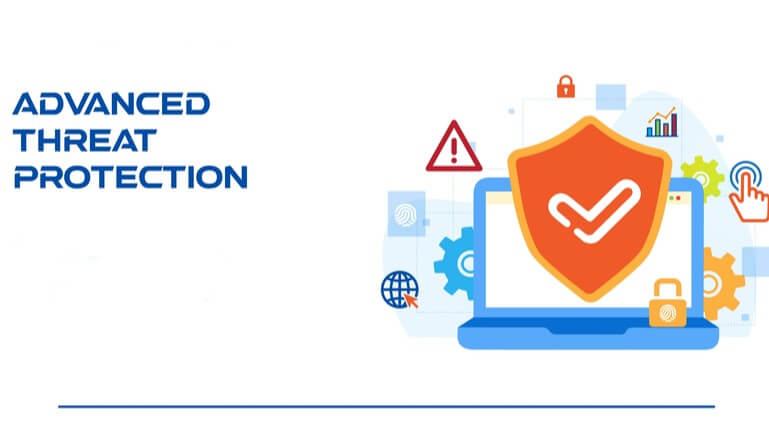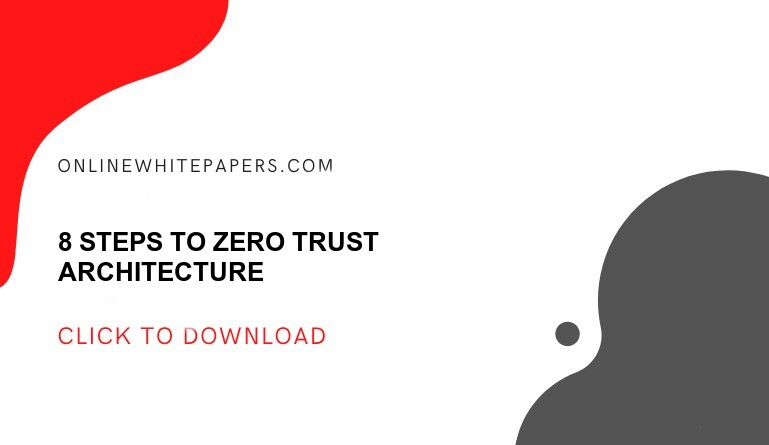Today we are seeing a constant threat to enterprise systems by cybercriminals. These cyber attackers are innovating at their end as well, making their methodology highly sophisticated.
Cybersecurity technology has undergone tremendous evolution and innovation to keep up with these cyber attackers, predict the types of potential threats and attacks that can cause significant damage to organizations and governments. However, even though the latest cybersecurity technology can anticipate these attacks and threats, there is always a scare of new and unknown attacks, particularly for those organizations who do not have the right advanced controls in place.
Advanced threat protection (ATP) is a set of security solutions that are created to protect against complex malware and cyberattacks, whose objective is to target highly sensitive data. By implementing ATP, organizations can easily adapt to the dynamic methodologies of cyber attackers; resulting in better prediction of attacks and avoiding any security lapses.
Why is a threat said to be “advanced”?
Typically, a threat is said to be advanced when the attackers have a plethora of resources and tools to execute these attacks and at the same time maintaining access to the network. Moreover, these attackers also have continuous funding support so that they can carry out these attacks either in general or probably target a specific organization or a government.
Even before we delve into the ways of defending against such threats, it is pertinent to understand the different types of such threats, what they are, and the way they can impact the organization.
There is something called Advanced Persistent Threat (APT), which is an attack where unwanted people get stealth access to an organization’s network and siphon away with sensitive data. What distinguishes APT from other types of attacks is the longevity of time that these attackers remain undetected in the network.
These attacks are well planned and coordinated targeting a specific organization, where attackers use malware that can easily bypass the standard security protocols implemented by the organization.
Once the attacker gets access to the network, then they will install malware or through phishing, view all files, documents, conversations, data, and other types of confidential and sensitive material. If these attackers go undetected for a long duration of time, days, weeks, or sometimes years as well, they can gather a significant amount of information and company data that they can use for any sort of malicious practice.
( Also Read: A Complete Guide on Advanced Persistent Threat )
Common Tactics of Advanced Threat Attacks
- Phishing – Where attackers send links from a source that looks familiar and trustworthy. Through phishing, attackers try to gain access to the credentials of an organization to siphon information
- Malware – Once attackers gain access to the organization, they can then install malicious software in the network to restrict access to others and start collecting company data.
- Password decryption – Where attackers crack the password of the organization and once done, they get a free license to roam in the company’s network.
How To Defend Against Advanced Threats?
There are some organizations and sectors in particular that are primary targets for such advanced threat attacks, however, it is important that every business enterprise adopt preventive measures as we see such attacks becoming more prevalent across the board, irrespective of organization size.
There is continuous innovation and evolution in ATP technology as we see cyber-attacks becoming more and more sophisticated. Sandboxing protection is very critical for ATP, where the technology inspects suspicious files. However, this technology is in legacy hardware that is located inside an on-premise data center and does not protect any remote workforce.
Additionally, the file that is suspicious of carrying an attack is inspected using a TAP mode. In this method, the file is captured in the sandbox for testing, while being transferred through the recipient. The moment a threat is detected, the sandbox sends an alert. The sad part is that the alert can come late after the damage is done.
Furthermore, if you look at today’s malware, more than 50% of this malware is delivered through a channel that has SSL encryption. However, budget constraints and limitations around performance stop organizations from detecting these vulnerabilities at an early stage.
Having a cloud-based technology can help organizations add additional layers of protocols to their ATP landscape. This will ensure that their employees, both onsite and remote are protected.
Furthermore, instead of working in a TAP mode as described above, Zscaler Cloud Sandbox operates in line. It means that the sandbox inspects all traffic within a network, including SSL and it is done even before a suspicious file is detected.
Extra protection can be added if the ATP technology is always-on, there is zero-day protection, ransomware defense, real-time visibility into any malware behavior. If an organization implements a comprehensive security system, then it must be able to prevent known threats, deliver real-time prevention of zero-day attacks, and through predictive technology secure the organization from new and upcoming threats.
Top features of Advanced Threat Protection (ATP)
Here are some salient features of advanced threat protection technologies.
-
File analytics:
Having strong endpoint security ensures all files are being accessed by a device that has been placed under detailed security scrutiny.
-
Combined prevention and detection:
The primary objective of ATP technology is to prevent any type of cyber-attacks. However, some attacks can slip through and that is where ATP technology is able to detect such attacks and then perform remedial measures.
-
Rich threat intelligence:
ATP solutions are not just about preventing attacks, but by harnessing cyber threat intelligence, gaining information that is up to date so that they can work effectively against the ever-evolving threats.
Enterprises that implement advanced threat protection systems can have better control over these cyber-attacks as they are able to detect these attacks well in advance and secure their data. A good ATP technology provider will ensure that the protection happens on a real-time basis and there is a well-defined response that is initiated to stop such attacks from happening n the future.






